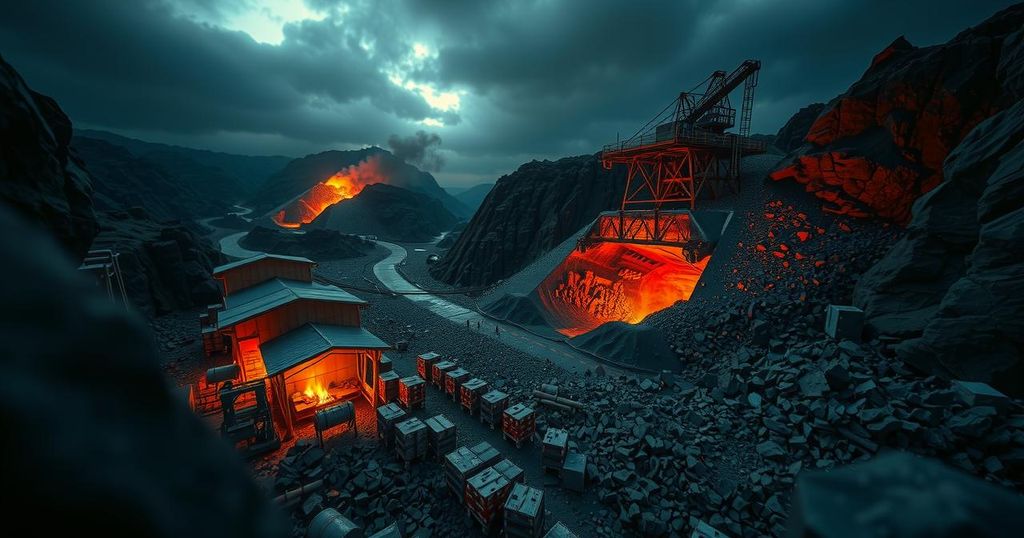Kolwezi: A Strategic Battleground in U.S.-China Competition for Critical Minerals

Kolwezi, D.R. Congo, is crucial in U.S.-China competition over critical minerals, with the new Lobito Corridor aiming to enhance transport routes. Despite potential benefits, local citizens remain largely unaffected by the mineral wealth as Chinese firms dominate mining operations. President Biden’s initiative seeks to challenge China’s presence, while residents’ struggles in the mining sector highlight economic disparities.
The city of Kolwezi in the Democratic Republic of Congo is emerging as a pivotal location in the ongoing U.S.-Chinese competition over critical minerals. Known for its extensive copper and cobalt mines, Kolwezi is now the focal point of the Lobito Corridor initiative, a U.S.-backed infrastructure project aimed at enhancing mineral transport routes to the Atlantic coast. This strategic endeavor is seen as an effort to diminish China’s dominance in the region, where Chinese firms currently control a significant portion of mining operations.
President Biden’s recent visit to Angola for the promotion of the Lobito Corridor reflects the urgency of this competition, particularly as Western nations seek greater influence in central Africa’s resource-rich zones. The corridor will significantly improve access to ports, thereby facilitating quicker exports of minerals from Congo and adjacent Zambia to global markets. However, analysts have expressed skepticism regarding the U.S. capability to compete effectively with Chinese interests, given Beijing’s substantial investments through initiatives such as the Belt and Road Initiative.
The stark contrast between the wealth of minerals in Congo and the poverty faced by its citizens raises pertinent questions about the benefits of these resources. For many Congolese, especially in Kolwezi, mining remains a labor-intensive endeavor that yields minimal financial reward. The everyday struggles of residents, such as Marie Banza Ngoy, highlight the disconnect between mineral wealth and local economic opportunity as they continue to rely on rudimentary means for survival while selling their finds to intermediaries linked to Chinese traders.
Despite the implications of the Lobito Corridor on the geopolitics of mineral extraction, the immediate impacts on the local populace continue to be overshadowed by the pervasive corruption and exploitation that characterize the Congolese mining sector.
The Democratic Republic of Congo is endowed with immense mineral resources, particularly cobalt and copper, which are essential for various industries, including electric vehicle manufacturing and electronics. As global demand for these metals surges, asset competition for Congolese mines intensifies between Western nations and China, which has secured substantial investments and ownership within the country’s mining sector. President Biden’s administration seeks to establish a counterbalance to China’s dominance by facilitating the Lobito Corridor, a transportation route designed to expedite the transportation of mined resources to international markets, specifically to benefit the U.S. and its allies.
In summary, Kolwezi stands at the center of a geopolitical contest over critical minerals, influenced heavily by infrastructure initiatives like the Lobito Corridor. While the project aims to enhance U.S. influence and develop local economies, the ongoing presence of Chinese firms and the challenges faced by Congolese citizens illustrate the complexities involved. The disparity between the country’s rich mineral resources and the impoverished state of its populace must be addressed, as local communities often remain disconnected from the wealth generated by the very resources available within their borders.
Original Source: www.wmra.org








